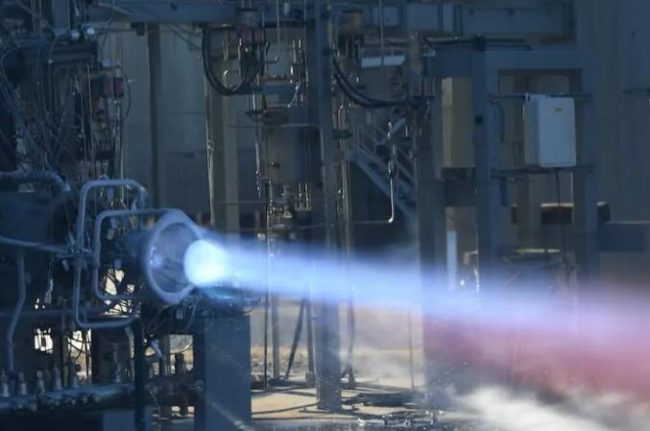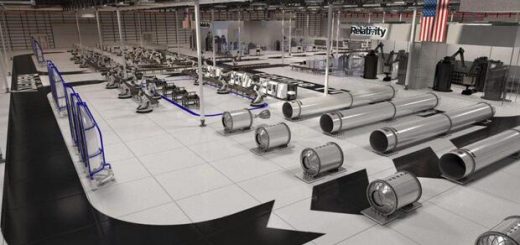3D Printed Rocket Engine Parts Survive 23 Hot-Fire Tests
Future lunar landers might come equipped with 3D printed rocket engine parts that help bring down overall manufacturing costs and reduce production time. NASA is investing in advanced manufacturing – one of five industries of the future – to make it possible. Hot-fire testing of an additively manufactured copper alloy combustion chamber and a nozzle made of a high-strength hydrogen resistant alloy. (Credit: NASA)
Hot-fire testing of an additively manufactured copper alloy combustion chamber and a nozzle made of a high-strength hydrogen resistant alloy. (Credit: NASA)
Through a series of hot-fire tests in November, NASA demonstrated that two additively manufactured engine components – a copper alloy combustion chamber and nozzle made of a high-strength hydrogen resistant alloy – could withstand the same extreme combustion environments that traditionally manufactured metal structures experience in flight.
A team of Marshall test engineers put the 3D printed parts through their paces, performing 23 hot-fire tests for a total duration of 280 seconds over 10 test days. Throughout the testing, engineers collected data, including pressure and temperature measurements in hardware coolant channels and the main chamber, and high-speed and high-resolution video of the exhaust plume and chamber throat. The team also calculated the chamber’s performance and how efficiently the engine used propellant overall.
The high-strength iron-nickel superalloy nozzle was printed using a method called laser powder directed energy deposition, which deposits and melts the metal powder locally to create freeform structures. This method allows engineers to manufacture small and large-scale components, as demonstrated in NASA’s RAMPT project.
The tests were a part of NASA’s Long-Life Additive Manufacturing Assembly (LLAMA) project, which aims to enable these 3D printed parts – along with other additively manufactured hardware – for use on future lunar landers. The team will perform additional hot-fire tests to further demonstrate and validate the durability of the engine components. Marshall leads the LLAMA project for NASA’s Game Changing Development program, part of the agency’s Space Technology Mission Directorate.
Source: Aerospace & Defense




Recent Comments